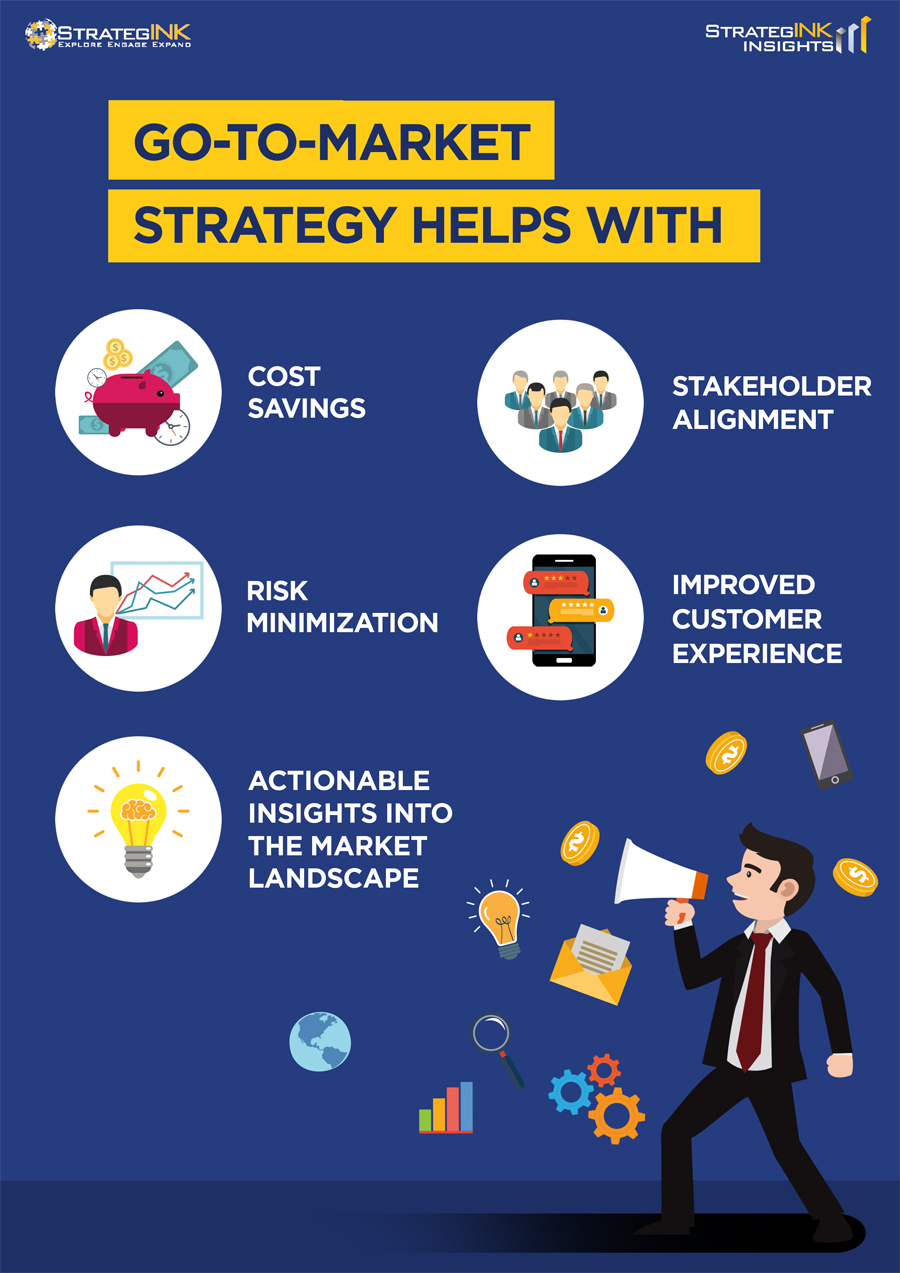
Points in focus
- A go-to-market strategy helps startups minimize risks, reduce the time for product launch, optimize costs and improve customer experience.
- Identifying the target market, building buyer personas, having clear value propositions and key messaging, etc are needed to craft a go-to-market strategy.
Many times startup founders in the early stages get so caught up in product development, business development, and hiring that they tend to overlook the importance of marketing. Creating a business from scratch is itself a complex task. Starting a business is just the beginning, to ensure that the business not just survives but expands and is profitable is another challenge.
Early-stage startups shut down for a variety of reasons, one of them is poor marketing. Once the product is ready the next step should be to look at effective ways to market it. Just creating a unique product or a service will not guarantee long-term success unless it reaches the market it was intended for. Startups can benefit a lot by prioritizing marketing. Some of the ways marketing can help startups are by establishing brand identity, boosting sales, building trust, increasing customer loyalty, and delivering value to the customers. In one of our earlier blogs, we dived deep into The Strategic Importance of Marketing for Startups, you can access the blog here. In this article, we will focus on the go-to-market strategies for startups.
Why do startups need a go-to-market strategy?
The go-to-market strategy is needed to successfully launch a product in the market. It is a step-by-step action plan that involves identifying the target audience, engaging with the customers to sell the product, and achieving a competitive advantage. Effectively executing the go-to-market strategy can result in the following benefits:
- Helps establish goals and timelines and aligns all the stakeholders.
- Minimizes risks by anticipating challenges.
- Provides a better understanding of the market, target audience, and competition.
- Reduces the cost of marketing by decreasing the time required to market a product and preventing mistakes leading to product launch failure.
- Delivers a better customer experience and builds trust.
Go-to-Market strategy for startups
The goal of an effective go-to-market strategy is to ensure the success of a product when entering the market. To achieve this, a go-to-market strategy acts as a tool and a guide comprising different marketing methods and strategies. Building a comprehensive go-to-market strategy involves the following:
Identifying target market
Clear identification of the target audience is important before launching a product into the market. The target market would be the one who would be a set of people for whom the product is intended and who are most likely to buy it. These individuals or companies have a set of shared business needs and pain points and will benefit the most from the product being launched. Researching and identifying the shared interests and similarities between different groups is called customer segmentation. This helps in creating an ideal customer profile. These customers generate revenue, provide referrals, and can also act as brand advocates.
Defining the value proposition
The customers will buy products that are beneficial to them or can solve some problems they face. The value proposition should highlight the reason why customers should purchase a product, the unique features offered, and how it’s different and better from the competitors. The marketing efforts such as content creation for the marketing campaigns can be based on this.
Building buyer personas
Building buyer personas help better understand the specific needs and journey of different buyers. Understanding how buyers navigate the buying process is crucial for finding ways to reach out to them. To build buyer personas, the first step is to list down the job titles and roles that will be impacted by the solution, the specific pain points these roles face, and the goal that they expect the solution to achieve. Interviewing the people that fit the ideal customer profile is a good way to gain insights needed for building buyer personas.
Researching competition
Researching the competition helps understand the market trends, and what customers like and dislike about the products currently in the market. It helps know the USP of the competitors that assists in creating a product that is different and adds more value than what is available in the market. This is also useful in clarifying the value proposition of the product when creating marketing content.
Mapping the buyer’s journey
Mapping the buyer’s journey helps in creating marketing content including the key messaging. It helps present the right content at the right time to the buyers. The buyer’s journey can be broken down into three stages:
- Where the customers understand the problem and are exploring solutions. At this stage, the content should be light, informative, and grab the attention of the buyers.
- The second stage is where the customers are aware of the product and are comparing it with other options available in the market. Here the customers can be engaged with educational content such as e-books, webinars, etc which can convince them that the product is the best option.
- In this stage, the customer decides whether to purchase the product or not. The goal is to sell the product. Here the sales team will take over from the marketing team and close the deal.
Choosing key messaging
The key messaging should effectively communicate the value of the product to the target audience. The language and tone should be such that the buyers connect with it and can understand how the product addresses their pain points. The marketing messages should be tailored to resonate with each buyer persona identified. A value matrix needs to be created that can help map the key messaging to the individual buyer personas. It involves taking into account the different buyer personas, their specific pain points, the value addition of the product, and the key message on how the product solves problems.
Selecting marketing channels
The next step is to create a promotion strategy to market the product. A marketing plan needs to be formulated outlining the steps for reaching the target customer base. The different marketing channels can be social media, articles, e-mails, leading business blogs and newsletters, and business and networking events. The marketing channels can help create demand for the product. When choosing a marketing channel, two things should be taken into account: the target audience and at what stage of the buyer’s journey they are currently at. This helps in content customization and delivery.
Setting success metrics
To measure the success of a go-to-market strategy the goal and metrics should be set. These metrics should be meaningful and easy to track. A set of Key Performance Indicators (KPIs) can be deployed to measure the success or failure of the go-to-market strategy. These can range from leads generated, product signups, user retention, monthly revenue, market share, etc. This data-driven approach assists in assessing the effectiveness of marketing campaigns and making informed decisions to reach the business goals.
Build the Right Go-To-Market Strategy with StrategINK Startup Pulse
StrategINK can help startups build robust Go-to-Market strategies with its years of experience in the field of market activation. By collaborating with StrategINK Startup Pulse, startups can benefit by getting a better understanding of the marketplace, market research, access to mentors and industry leaders, and the chance to be featured in a leading technology and business newsletter and editorial platform to accelerate the GTM efforts significantly.







